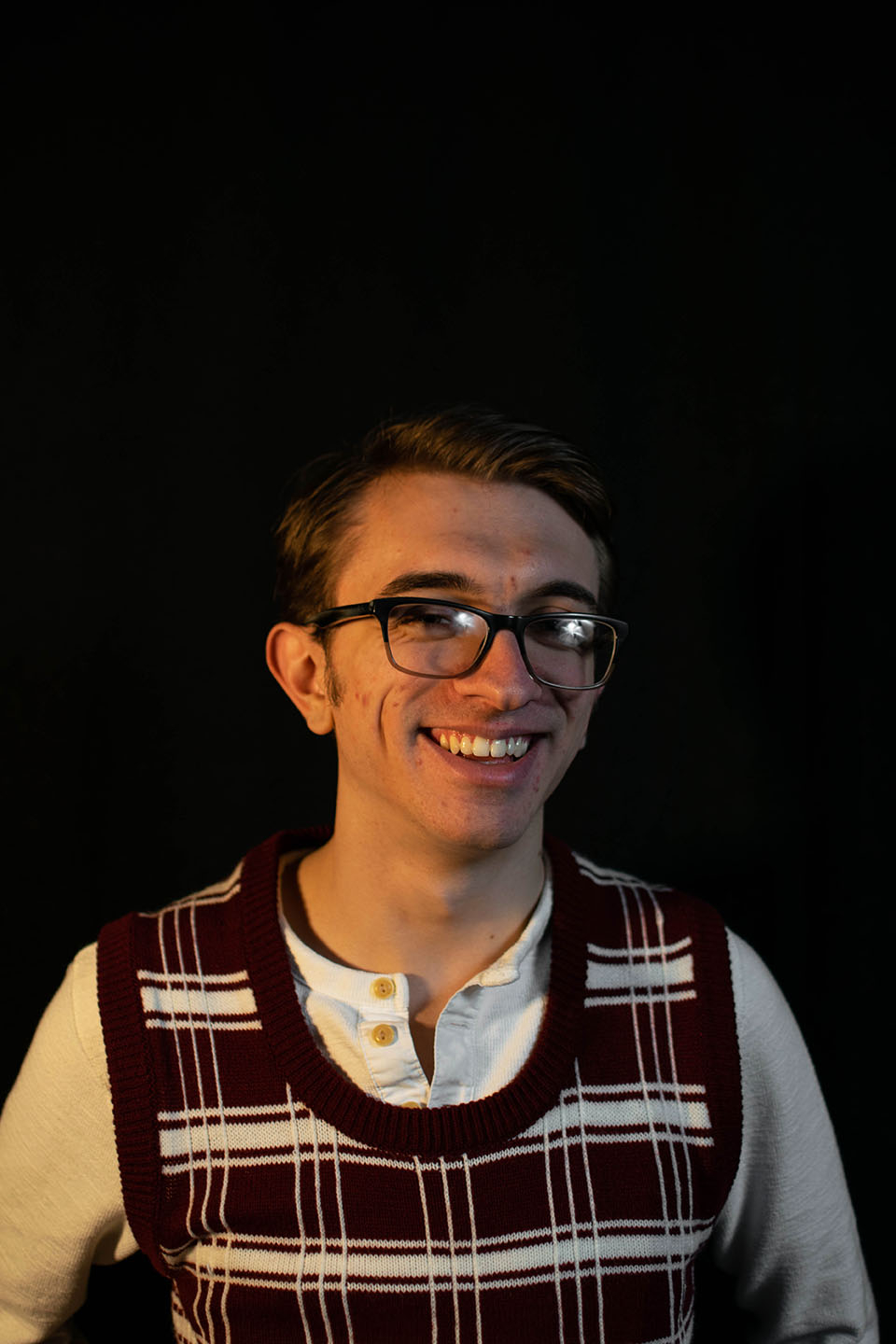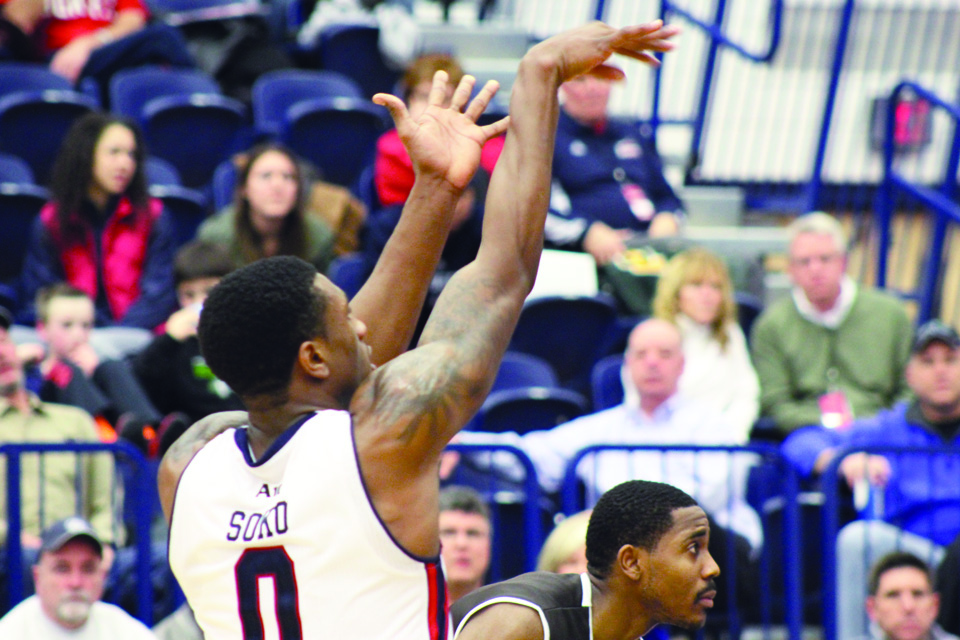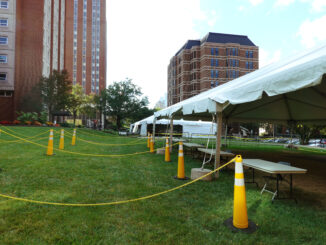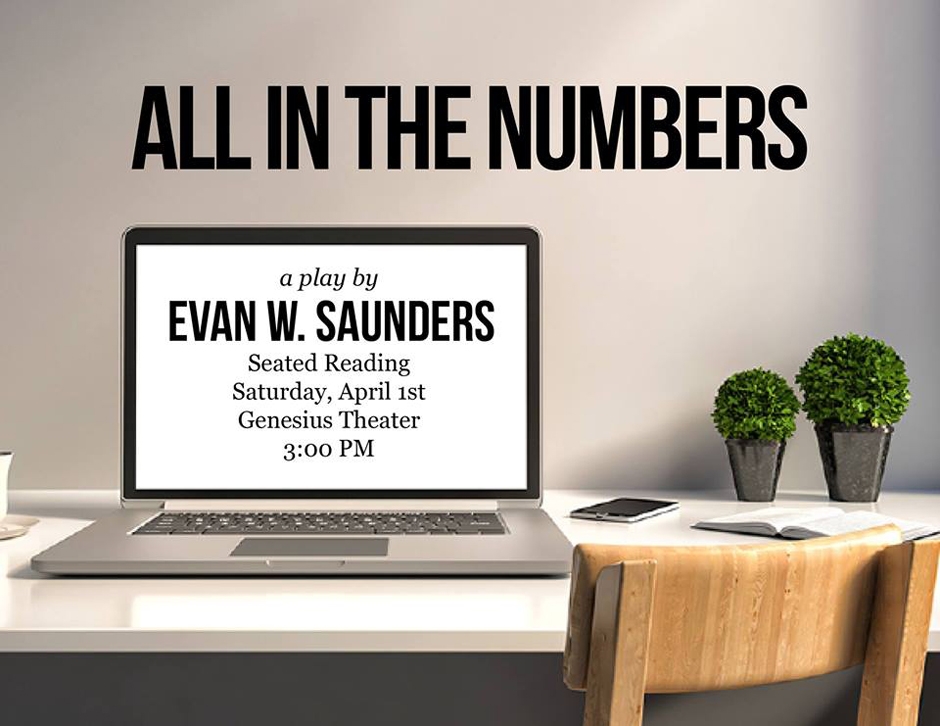
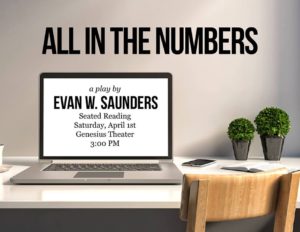
Saunders’ previous work includes “Threads.” Part of the Pittsburgh New Works Festival, “Threads” was produced at the Off The Wall Theater in Carnegie.
By Zachary Landau | Asst. A&E Editor
For Junior Economics student Evan W. Saunders, theater has always been a huge part of his life. Now, in the middle of writing his first full-length play, “All in the Numbers,” Saunders is hoping to polish his latest work with a seated reading on Saturday April 1, 3 p.m. in the Genesius Theatre. Saunders shared his experience writing “All in the Numbers,” including his inspiration and considerations throughout the process.
Question: What’s it like to shift from a one-act to a full-length play?
Saunders: “It’s really a gradual process for almost all playwrights. No one really sits down and writes a full-length play or novel to start. There’s an old saying, ‘How do you eat an elephant? One bite at a time.’ So eventually you get used to take bites of the elephant until you realize you ate a whole elephant.”
So what was your inspiration for “All in the Numbers?”
S: My roommate one day… just spouted out this thought off the top of his head, “Man, I’ve always really wondered at the end of my life, I really hope I get just a list of all the times I… washed my hands, or how many times I went to the bathroom, how much time I spent doing that, how much food I ate. So I spun that off to just wonder what happens if after you died you get a list of all the quantifiable information that can be extracted from your life. And to up the ante a little bit, what if you could look at all of the quantifiable information from everyone’s life?
I know a lot of people I talked to when I asked this question, they would say, I would see how much coffee I drank, how many steps I walked and one or two other unique things to them. As I am an economics major, and as someone used to looking at large bits of data, I know there’s usually information you can pull out of it that isn’t there at face value. So I thought I just don’t want to sit down with it, I want to get behind a computer and see if I can find more meaning in this. That’s where the idea came from.
“Threads” was more of a love story. What type of tone or genre do you think “All in the Numbers” is aiming for?
S: I’m calling it an existentialist dramedy in that it asks big questions, but at the same, it is still a play about people. The relationships among the three main characters are really a driving force behind the story.
What type of writers do you look to when writing plays? And what else inspires you? Is it just happenstances?
S: It ranges all over the place. Sometimes it’s weird ideas like that; that was the most fortuitous experience I’ve had of someone taking this big idea and dropping it in my lap to play with. Other times, it’s just a stray thought that you chase a little bit until you realize you stumbled on something bigger. It’s really elusive.
But other writers, other art, any other thing really, can really inspire you. They say the best way to become a better writer is to write and also to read. I think everything I’ve read has snowballed its way into whatever I’m working on. So I was into Samuel Beckett’s “Waiting for Godot” back when I was in high school. I still love it; it’s one of my favorites. Something like that, where two people alone on a stage wondering about the meaning of their sad, little lives, definitely in its own way influenced how I am writing (“All in the Numbers”) even though it is really different.
But why plays? Is there something about the medium that you find particularly attractive?
S: I’ve tried to be a prose writer. I’m okay at it, but I guess I just think more situationally. So dialogue comes very naturally to me. I like the kineticism of plays, it feels much more alive, and so much more visceral, to me. I grew up watching plays and acting in them, so it’s a medium I guess I developed some instincts for. I understand it without knowing I understand it.
You also do a lot of work with the Red Masquers. Is there a way that your experience with them helped this play in particular?
S: Definitely. A lot of times — and you don’t want to have to think this way, but you do — is that putting on shows cost money. And a lot of times, what theater companies don’t have is money. So it helps if you can find a way to be creative while thinking economically. I always joke that I’ll know I’ve made it when I can say I want ten igloos and an elephant seal on-stage and they’ll get it for me. But the idea of how can I tell a story with just three people, a desk, a laptop, and a ficus plant, is having that experience of knowing what it takes to put on a show and knowing what you can and can’t do. It helps you be more creative to accept limitations and finding a way to work around them.
Is there a producer for this play or have you only just written it?
S: I’ve just written it. What’s happening this Saturday is a seated reading. I have some actors, and they’re reading the script aloud for an audience. It’s like a test viewing for movies, which let’s me hear what works, what doesn’t. There’s a feedback session afterwards, so the audience can say, Hey, I liked this, or, Man, this sucked, or, Where are you going with this? And I may not answer any of those, but I will take them into account and figure out how to revise it. So you could say for this reading I’m self-producing.
Going back to what you said earlier about working with constraints, is there any time where you start from the constraints first and work from there? Or do you try to meet in the middle between inspiration and reality?
S: I would say always try to meet in the middle with a slight lean toward the creative side. I read about someone once who talked about having the writer on one shoulder and the producer on the other shoulder, and the writer saying, “I want to do this!” and the producer saying, “But can you really do that?” So you never want to start with, I can’t do this, I can’t do this. You always let the idea come first, let it figure out what it needs to do, and then have the insight and the maturity to step back and say, okay, how can we do that?


